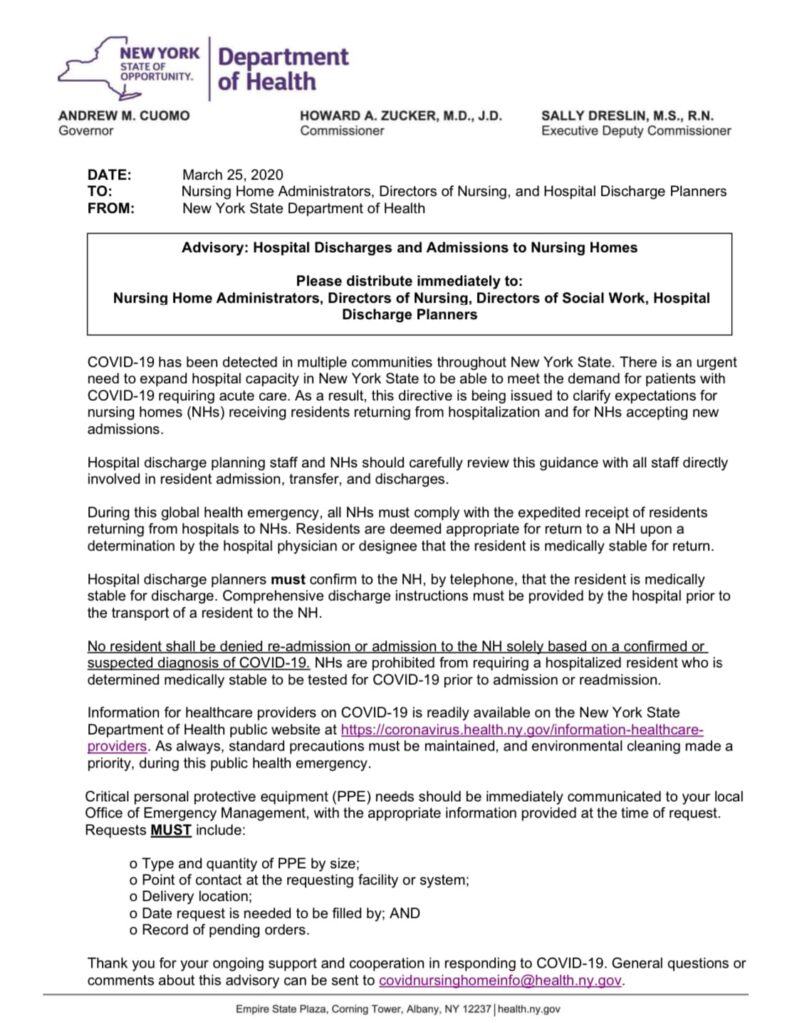A Guest Column written by New York State Assemblyman Doug Smith
Four years have elapsed since a controversial executive order by former Governor Andrew Cuomo’s health department set off a chain of events culminating in his resignation. On March 25, 2020, an order was issued mandating that all nursing homes in New York State accept COVID-19 positive patients, a directive that controversially included a ban on testing incoming residents for the virus. This policy, reversed mere weeks later, left an indelible mark on the state’s handling of the pandemic, particularly in its nursing homes.
The fallout from this decision was profound. In August 2020, I joined with colleagues from both the Senate and Assembly, to participate in a bipartisan Hearing on COVID-19 deaths in nursing homes. We demanded answers from the Health Commissioner on the true toll the virus had taken on nursing home residents. Astonishingly, within an hour, the Commissioner was abruptly withdrawn from the proceedings by Governor Cuomo himself.
The quest for transparency did not end there. Lawmakers across party lines, the U.S. Justice Department, and the Empire Center, a non-profit watchdog, all sought clarity on the matter. It wasn’t until January 2021, following a legal mandate, that New York State was compelled to disclose the requested data to the Empire Center. The subsequent leak of a Zoom call, in which Cuomo’s office admitted to freezing up under federal scrutiny, only added fuel to the fire.
This saga took a dramatic turn when Assemblyman Ron Kim, a participant in the infamous Zoom call, publicly accused Cuomo of threatening his career. Kim’s bravery opened the floodgates for others who had been similarly intimidated or harassed by Cuomo, including 11 women who came forward with allegations of sexual misconduct. These revelations precipitated Cuomo’s resignation on August 24, 2021.
Yet, the aftermath of Cuomo’s departure has done little to soothe the wounds of those affected. It was later unearthed that the Cuomo administration might have underreported nursing home deaths by over 15,000, a discrepancy possibly motivated by a $5 million advance Andrew Cuomo received for a book he authored on pandemic leadership. Further controversy arose over the use of taxpayer-funded staff for the book’s completion, sparking ongoing legal debates over potential violations of state ethics laws.
Today, as we mark this grim anniversary, the promised investigation by Governor Kathy Hochul into the Department of Health’s initial order remains pending. The silence from the state government, devoid of any apology or accountability, is deafening.
As a member of the Aging Committee who stood demanding answers in that August 2020 hearing, I affirm that the quest for truth and justice for the 15,000 lives lost is far from over. The memory of those we’ve lost and the fight for accountability continue to guide our actions. We owe it to them, and to the people of New York, to ensure such a tragedy never occurs again.
